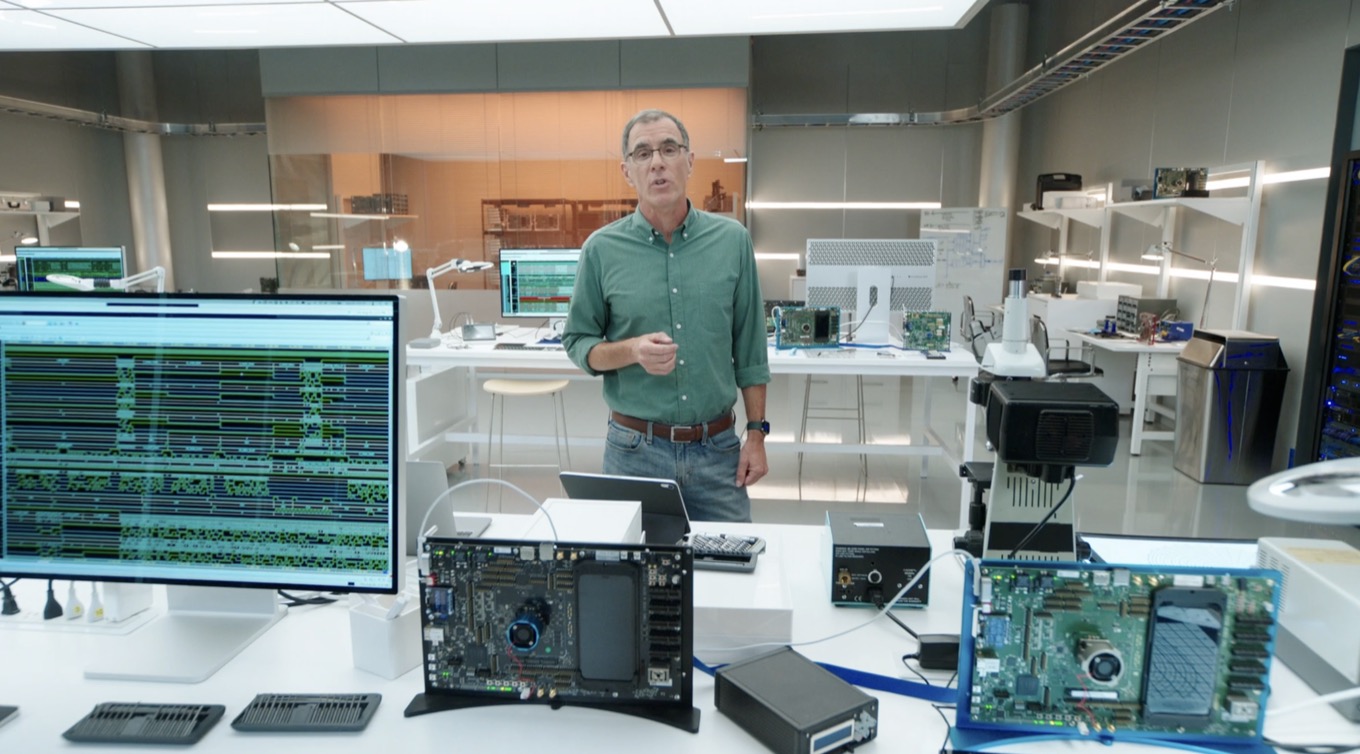By Jason Snell
September 16, 2020 4:09 PM PT
The reluctant debut of the A14 processor
Note: This story has not been updated since 2020.

On Tuesday Apple unveiled a bunch of new stuff, including two new Apple Watches, two new iPads, a new fitness subscription service, and a bundle of its many services
And, oh yeah, the A14 processor.
It was almost certainly not the debut that the company had planned. Apple likes to trumpet the innovations in chip design it has made over the past year at its biggest event of the year, the launch of the new iPhones. It’s been nine years since an A-series chip has debuted outside of the iPhone1.
But 2020 has proven to be really, really good at disrupting plans. And while the iPad Air was ready to be announced, the iPhone 12 wasn’t. So Apple unveiled the A14 processor and boasted about how it made the new iPad Air so much faster than the previous model. It’s up to 40% faster, with 30% faster graphics performance, and machine-learning performance is up to 10 times faster.
But all of those figures compare the A14 in the iPad Air to the A12 processor in the previous model, not the A13 processor found in the iPhone 11 series. Now, Apple would likely claim that it’s only fair to make a comparison across devices with similar screen sizes and thermal characteristics. But in scrupulously adhering to the comparisons to the A12, Apple is not telling us how much faster the base A14 processor—likely the foundation of the next generation of iPad Pro models and possibly even the first round of Macs running Apple Silicon—is compared to its immediate predecessor.
I don’t think Apple’s doing this because it’s not proud of the A14. (On the contrary, Apple seems very aware of how important this chip is, including the fact that it’s Apple’s first to be manufactured using Taiwan Semiconductor’s new 5-nanometer process.) No, this is about leaving some space for Apple’s forthcoming iPhone launch event to boast a bit more about the A14. Which makes sense. The iPhone is Apple’s most important product. It deserves to be boasted about a bit.
In the meantime, we’re left with pure speculation about how the A14 compares to the A13. Last year I tested the iPhone 11 against previous models, and the results showed a 29% improvement in single-core CPU performance and a 55% improvement in multi-core CPU performance. If a single high-performance core in the A14 is 40% faster than that of the A12, that would suggest that it would be maybe ten percent faster at single core operations? Presumably multi-core performance would be greater, but we just don’t know.

The biggest jumps in performance these days seem to be happening in machine-learning tasks, where Apple has doubled the Neural Engine’s core count from eight to sixteen, as well as double the number of machine-learning accelerators (which allow optimized matrix multiplication used in ML tasks) in the CPU itself.
Are there other optimizations in the A14 that we don’t know about yet? Oh, probably. Consider that the new iPhones will likely feature upgraded cameras and some of them will include LIDAR sensors (introduced on the 2020 iPad Pro—the iPad’s really stealing the iPhone’s thunder this year). Those cameras and sensors will probably be taking advantage of some very specific secret sauce Apple has ladled into the A14, and Apple isn’t going to say a peep about any of that until the iPhone gets its moment in the sun.
So, for now, what we know is that there’s a new iPad Air, it’s got an A14 processor, that A14 processor is better than the A12 in a bunch of ways and better than the A13 in ways we don’t really know yet. We’ll learn more when the new iPhones are announced, and we’ll presumably learn even more when new iPad Pro models appear with a scaled-up version of the A14.
And as for Macs with Apple silicon? Who knows. The first Apple silicon Mac could ship with something as modest as the same A12Z that’s in the iPad Pro and the Apple silicon Developer Transition Kit. It could ship with an A14X processor designed for Mac laptops and iPad Pros alike. Or it could ship with something completely different—though even then, I’d lay odds that it will be a chip based on the A14, even if it’s got an entirely different name.
- The iPad 2 introduced the A5 processor months before it appeared in the iPhone 4S. ↩
If you appreciate articles like this one, support us by becoming a Six Colors subscriber. Subscribers get access to an exclusive podcast, members-only stories, and a special community.

